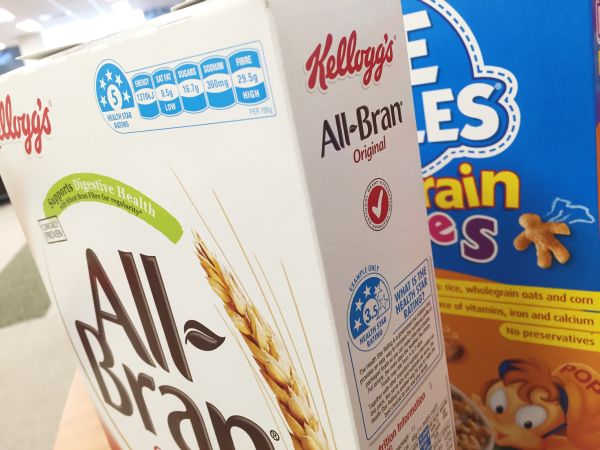
Consumer advocacy group Choice has hit out at food brands that are “gaming” the Health Star Rating system.
The group says it has uncovered what it calls “health washing” on a popular Nestle powdered drink and a number of cereals from Kellogg's as the food giants try “manipulate the Federal Government’s Health Star Rating scheme”.
The ratings take into account kilojoules, protein, salt, sugar and saturated fat per 100 grams, allowing consumers to choose healthier options within a category without you having to seek out each of these details.
It says six major food companies are still refusing to place health stars on their products including McCain, Mars, Mondelez, PepsiCo, Goodman Fielder and George Weston. Choice is running a campaign calling on these companies to get on board with the system.
Choice spokesperson Tom Godfrey says: “It probably comes as no surprise that some food companies would try to game the Health Star Rating system. Clearly the desire to roll-out Health Star Ratings on some of their products was more marketing trickery than a genuine attempt to help consumers make an informed Choice.”
He added that Nestle’s Milo displays a Health Star Rating of 4.5 stars but closer inspection reveals the rating is based on the product made up with skim milk. Without milk, Milo only gets a 1.5 star rating.
“Nestle calculates the Health Star Rating of Milo by assuming that Australians add three teaspoons of the mix to 200ml of skim milk,” Godfrey added.
“Do they really think this is how most Australians consume Milo? Calculating the Health Star Rating of Milo with skim milk is not helpful for consumers, especially for Aussies who eat their Milo with full cream milk, or even straight out of the can or on ice-cream.
“With 11 teaspoons of sugar per 100g, Nestle’s 4.5 star rating on its Milo product is hard to swallow.
“Health Stars are a great system that can help consumers but the guidelines need tightening up. Clearly, the Health Star Rating rules need a review to make sure unhealthy products can’t make themselves appear better than they really are,.”
Choice says Kellogg’s is also sugar-coating the truth with its low-rating breakfast cereals by including a prominent display of an ‘example Health Star Rating’ of 3.5 stars on the side of its boxes.
For example, Crunchy Nut Corn Flakes Clusters, which only score two stars, has an ‘example Health Star Rating’ of 3.5 stars on the side of the boxes. Interestingly, Godfrey added, its All Bran cereal, which scores five stars, has an ‘example health star rating’ of five stars.
“Health Star Ratings were introduced to help consumers make healthier Choices. It is disappointing that food manufacturers are abusing the system to promote nutrient-poor foods as a healthier option,” Godfrey says.
“While we congratulate these companies for getting on board with Health Stars, it is not useful to consumers when they game the system to make their products seem healthier.”
Speaking to AdNews, a Kellogg spokesperson said the star rating for all of its cereals is shown on the front of pack and that information is also available on its website.
“Kellogg’s is not gaming the Health Star Rating system,” the spokesperson said.
“An explanation of the Health Star Rating system is shown on the side of our packs and is clearly labelled as ‘example only’. This uses 3.5 stars regardless of the product – a five star food such as All Bran also shows 3.5 stars on the side.
“ We have already started the process of updating all of our packaging so that the example matches what is shown on front of pack. This will be completed soon.”

Have something to say on this? Share your views in the comments section below. Or if you have a news story or tip-off, drop us a line at adnews@yaffa.com.au
Sign up to the AdNews newsletter, like us on Facebook or follow us on Twitter for breaking stories and campaigns throughout the day.


